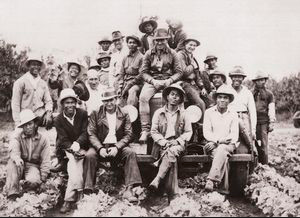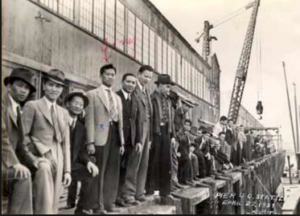Assimilation for Filipinos in America
Filipino immigration to the U.S. drastically increased during the 1900’s. Filipino immigrants settled in predominantly western regions, becoming the “largest ethnic group of Asian origin” in the state of California (Almirol, 299). Catholic churches played a significant role in assisting Filipino communities with assimilation to the United States as well as by providing social contracts that were intended to allivieate the increasing majority of immigration to California. In addition to Catholic Churches, the development of Filipino ethnic churches allowed Filipinos to maintain and express their cultural identity as they focused on building communities, and settling in the West (Almirol, 299). Post 1920, Filipino immigration experienced slight incremental growth, despite the Tydings-McDuffe Act, which limited Filipino entry to the U.S to 100 people per year (Almirol, 300). According to Edwin Almirol, it was not until the 1960’s that there was a significant increment in the population of Filipinos within the U.S. by 95% as a result of repealed immigration laws.
Filipino immigration to the U.S. increased, and anti-immigration sentiments began to arise making it more difficult for Filipino groups to settle in California. Filipinos were viewed as invaders and this perpetuated anti-immigration rhetoric causing other ethnic Asian groups to be barred from entering the U.S. Although Filipinos were granted “special entry status” they were still viewed as being unable to assimilate (Almirol, 300). In addition to this, Filipinos were prohibited from owning or purchasing land, joining labor unions, and from becoming citizens, which made it more difficult for assimilation (Almirol, 300).
Despite all of these restrictions, steamship agents and farmers targeted Filipinos with labor opportunities in an effort to fill their positions with workers as “cheap labor” (Almirol, 300). Filipinos who attempted to find alternative routes to make a better living such as attending school, were rejected and instead required to only attend segregated schools. This generally limited them to taking jobs of lower skill such as domestic work and farm labor. According to Almirol, Filipinos were seen as a “an economic threat to organized labor”.
http://depts.washington.edu/depress/filipino_anti_miscegenation.shtml
A large amount of Salinas farms hired Filipinos and this drew in competition with Whites. In addition to being viewed as a cheap labor force, Filipinos were also discriminated against and discouraged from forming labor unions or demanding a just salary ( Almirol, 302). Tension during the great depression made them more vulnerable to racist attacks especially in California. This led to anti-immigration rhetoric based on the argument that there was a need to “protect the racial purity and integrity of the U.S. (Almirol, 303). It was not until1965 that the Immigration and Naturalization act once again allowed Filipinos entrance to the U.S (Almirol, 307).
In response to being economically, culturally, and socially, excluded from the American society Filipino communities attempted to find ways to strengthen the ties within their own ethnic groups (Almirol, 707). In addition to individual groups, churches also aided with Filipino assimilation. The Church allowed them to maintain aspects of their cultural heritage (Almirol, 305). A major issue with attempts of Filipino assimilation into the American society revolved around discrimination. Although many Filipinos were Catholic prior to immigrating to the U.S., they were still excluded, which caused Filipinos to want to form their own Protestant church. The creation of the church allowed Filipinos to become united and strengthen their identity. Approximately 95% of Filipinos in Salinas identified as Catholic: however, church leaders’ specific treatment of them as only Catholic, not as Filipinos became problematic because they did not take into account their tradition (Almirol, 309).

